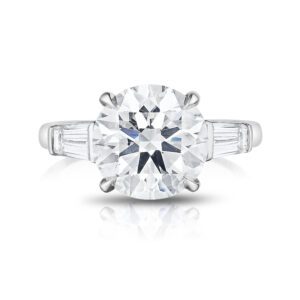Understanding Cut
Cut. The word brings to mind sharp and distinct imagery- a hairstylist’s scissors, charcuterie on a wooden board, the unused footage on a film editor’s floor. In gemological terms, “cut” has very specific applications, which are frequently and easily confused with the shape of a diamond, the facet arrangement, and the diamond’s cut quality.
People commonly ask, “What cut do you like most? Oval, pear, marquis?”. To which I respond, “Do you mean what shape do I like most?” The Shape is the outline of the stone, whereas the cut refers to the arrangement of the diamond’s facets- the flat faces. They are fashioned into different geometric shapes (triangles, squares, rectangles) and arranged to absorb and reflect light.
The 3 most recognizable Facet Arrangements are Brilliant Cut, Step Cut, and Mixed Cut. For example, the ever popular Round Brilliant Cut has 57 facets positioned to reflect light with maximum brilliance. The Oval Brilliant Cut is similar to its round shaped cousin but elongated and varied in dimension. Emerald, Baguette, and Asscher diamonds are Step Cuts with outlines that are either square or rectangular and whose facets are rectangular. Brilliance is not the aim with these cuts. The intention is to highlight the diamond’s purity with significantly less bling. Mixed Cuts are a marriage between the types and are found in Princess, Cushion, Radiant shapes.
A diamond’s fire, scintillation, and sparkle depend heavily on how well it is cut. The term Cut Quality refers to the appearance-based aspects, design, and craftsmanship of the diamond. Excellent and Very Good are the top range of laboratory assigned cut grades. Ideal Cut describes the relationship and proportions between the size, shape, and angle of each facet of a diamond.
Shape, Facet Arrangement, and Cut Quality. Equipped with a “clear-cut” understanding of their differences, you can prioritize and easily convey to your jeweler a diamond’s characteristics that are most important to you.

